
Johannes Japetus Smith Steenstrup FRS(For) HFRSE was a Danish zoologist, biologist, and professor.
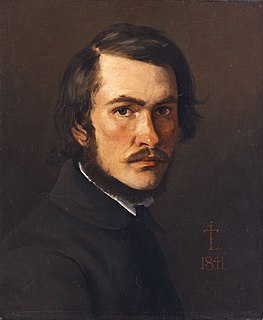
Johan Thomas Lundbye was a Danish painter and graphic artist, known for his animal and landscape paintings. He was inspired by Niels Laurits Høyen's call to develop nationalistic art through depictions of Denmark's characteristic landscapes; the historical buildings and monuments, and the country's simple, rural people. He became one of his generation's national romantic painters, along with P. C. Skovgaard and Lorenz Frølich, to regularly depict the landscape of Zealand.
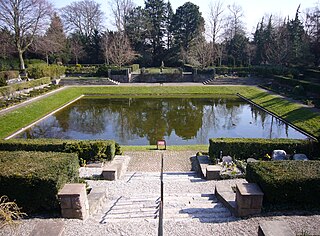
Vestre Cemetery is located in a large park setting in the Kongens Enghave district of Copenhagen, Denmark. With its 54 hectares it is the largest cemetery in Denmark.

Faroese literature, in the traditional sense of the word, has only really developed in the past two hundred years. This is mainly because of the islands' isolation, and also because the Faroese language was not written down in a standardised format until 1890. Until then the Danish language was encouraged at the expense of Faroese. Nevertheless, the Faroese language soon became a vehicle for literature in its own right and has produced writers in several genres.
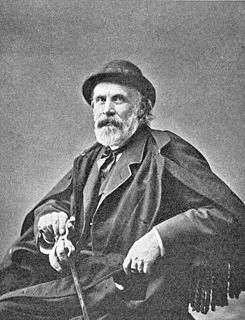
Lorenz Frølich was a Danish painter, illustrator, graphic artist and etcher.

Carl Frederik Bricka was a Danish archivist, historian and biographer.
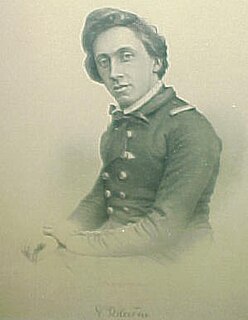
Thomas Vilhelm Pedersen was a Danish painter and illustrator who is known for his illustrations for fairy tales of Hans Christian Andersen. He was the first artist to illustrate Andersen's works. His drawings were converted into wood prints and used in the Danish and German editions.

Aller Media is a magazine publisher in the Nordic countries, headquartered in Copenhagen, Denmark. It publishes Elle, Cafe, Familie Journalen, Femina, Allers and Se og Hør.

Sophienholm is a former manor house and exhibition venue located north on the shore of Lake Bagsværd in Lyngby-Taarbæk Municipality in the northern outskirts of Copenhagen, Denmark.
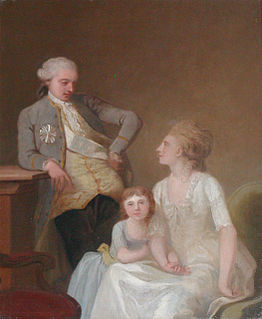
Johan Theodor Holmskiold was a Danish noble, botanist, courtier and administrator. He was noted for his scientific work with fungi and development of the Charlottenborg Botanical Garden. His career included work as director of the Danish Postal Services and the Royal Porcelain Factory.

Johan Christian Constantin Brun was a German-Danish merchant. Born in Germany, came to Denmark as Royal administrator of the trade on the Danish West Indies and in the same time built a successful private trading empire during the early Napoleonic Wars of the late 18th century, profiting on Denmark's neutrality.
Events from the year 1873 in Denmark.

The Gustmeyer House is a historic property on Ved Stranden, opposite Christiansborg Palace on Slotsholmen, in central Copenhagen, Denmark. It was built in 1797 to a Neoclassical design by Johan Martin Quist. The Nobel Prize-winning physicist Niels Bohr was born in the building. McKinsey & Company is now based in the building.
Aksel Jørgensen ( was a Danish painter and wood engraver. He is also remembered for his years as a professor at the Royal Danish Academy where he instructed many Danish illustrators.

H. C. Ørsteds Vej is a street in the Frederiksberg district of Copenhagen, Denmark. It runs from Gammel Kongevej in the south to Åboulevard on the border with Nørrebro in the north, linking Alhambravej in the south with Griffenfeldsgade in the north.

Louis Moe was a Norwegian painter, illustrator and writer who settled in Denmark.

Jean Christian Ferslew was a Danish newspaper publisher and paper manufacturer. He inherited a small printing business in the 1850s which under his management as C. Ferslew & Co. developed into the largest Danish newspaper publishing company of the late 18th and early 20th century. He also established a paper mill in Frederiksberg.
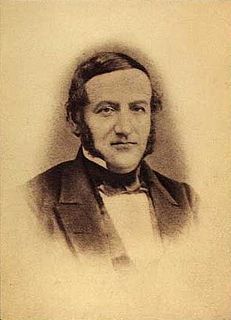
Meyer Herman Bing was a Danish businessman. He was a co-founder of Bing & Grøndahl.

Laura Christiane Aller née Bierring (1849–1917) was a Danish business woman and a pioneering magazine publisher. She first helped her husband Carl Aller to develop his photolithographic method of image production to establish a magazine containing recipes in 1874. The beautifully illustrated Illustreret Familie-Journal published from 1877 proved to be a huge success. Laura Aller not only had a flair for business, she understood exactly what people wanted to read. As editor-in-chief, she translated articles from the foreign press and added her own stories and poetry. After colour was added in 1895, sales increased dramatically and production was moved to larger premises on Vigerslev Allé in Valby. Aller Media, now based on Havneholmen in Copenhagen's South Harbour, is still run by the Aller family.

The Sigvert Grubbe House is a Renaissance style townhouse situated at Strandgade 28 in the Chrstianshavn neighborhood of central Copenhagen, Denmark. The property comprises the building at Wildersgade 41 on the other side of the block as well as a half-timbered building separating two central courtyards from each other. The apartment on the first floor features a number of murals attributed to Nicolai Abildgaard. The entire complex was listed in the Danish registry of protected buildings and places in 1918. It takes its name after its first owner, Sigbert Grubbe, a favourite of ChristianIV. It was later owned by Jacob Benjamin Italiaender, a Sphardi Jew, who established a tobacco manufactory as well as a private sunagogue in the yard. The painter Peder Severin Krøyer grew up in the building in the 1860s.




















